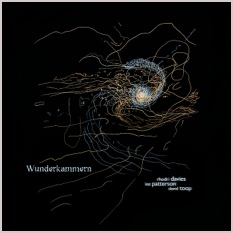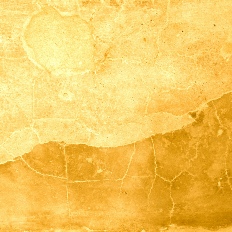Another Timbre TimHarrisonbre
The following article by Stuart Broomer appeared in February 2011 in the on-line music magazine Point of Departure.
It reviews all five of the discs that appeared in the Silence and After 1 series.
It’s not easy to develop a distinctive CD label, but since launching Another Timbre in late 2007, Simon Reynell has shown a definite curatorial knack. The label is largely devoted to free improvisation, and each batch will have a strong connecting thread, whether it’s the presence of brass instruments, guitar or the transformed piano. Reynell associates the latest group of releases with the 50th anniversary of the publication of John Cage’s Silence in 1961 (time to start prepping for his centenary in 2012), presenting music that’s related to that complex notion of silence in any of several ways, suggesting Cage’s on-going, even increasing relevance. Reynell includes both improvised and composed music in this grouping, and suggests in a note that “the dividing line... has become progressively fuzzier.”
Silence as idea as well as absence is, insistently, a clean slate onto which one can enscribe many meanings, thus the richness and extensibility of the Cage conception. There is the idea of a literal silence in which nothing seems to happen; an attuned silence in which one becomes aware of the unplanned audible content of the environment; the deliberately constructed interval of silence which is posed structurally or dramatically to contrast with intended sound. If silence can suggest a freedom from history and intentionality, it’s noteworthy that Cage’s thought flowered along with color-field painting and cool jazz in a specifically repressive era, suggesting HUAC-inspired silence or the special silence of the DMZ. Cage’s silence appeared, too, in an increasingly noisy world in which modes of marketing were becoming ever louder.
There is a kind of silence that emphasizes relationship, while another may promise instead an uncontested space, in which the listener is granted a unique ground, temporarily emptied of culture, authority and identity. In his book No Such Thing as Silence: John Cage’s 4’33”, Kyle Gann remarks that when Morton Feldman died in 1987, Cage “embarked on a series of works that veered curiously close to Feldman’s soft, sustained, quiescent style.” It suggests the necessity of that special Feldman-esque quietude: if Feldman weren’t around to make it, Cage would have to do so.
If Reynell’s latest group of CDs has a linchpin, it’s a performance of Cage’s Four4 for four percussionists from 1991 (Another Timbre at34) with Simon Allen, Chris Burn, Lee Patterson, and Mark Wastell. Four4 is one of those “time bracket” or “number pieces” which Gann associates with Feldman, and its composition is interested most in providing a map for the distribution of sounds within very broad zones. In this case, each of the four musicians picks certain sounds, assigns them numbers and uses that sound when the number comes up in the score. Time intervals for the score have been randomly generated and there are moments of extended silence within the 72-minute piece. Despite those random elements, Four4 sounds ceremonial here. Each musician has selected his sounds for maximum richness and these include piano, possibly gongs, highly resonant drums, and metal scratched into new life--creating a hyper-reverberant sense of ritual in which specific codes are suspended, a ground in which new sonic and temporal relationships are generated. Things are here to be experienced, but the movement to interpretation is largely irrelevant. Listening seems genuinely liberating, a kind of gently enforced, healing quietude.
American composer Michael Pisaro employs elements of both silence and environmental sounds, developing contemplative elements on Fields Have Ears (at37). “Fields Have Ears 1” combines piano, played by Philip Thomas, with a tape of sine tones and field recordings, literal field recordings apparently, since they consist largely of bird sounds. The piano part consists of isolated intervals, creating vast spaces within the music between the composed and found materials. “Fields Have Ears 4,” is heard here in a realisation for 14 players, including Thomas, piano; Patrick Farmer, natural objects; Sarah Hughes, zither; Dominic Lash, bass; and ten members of the Edges Ensemble, a Huddersfield group devoted to new and improvised music. While this release omits a description of the composition, it’s a text-based, programmatic work based on representing an environmental shift, e.g., “The light and sounds at sundown …” (the score offers a choice of five of these shifts; it’s available on-line at Compost and Height, along with a video made for one realization). Each performer picks two sounds and sounded sections alternate with silent portions for a determined length of 27’40”. The piece calls for intense concentration by the performers on the symbolic content of their sounds and comparable concentration on the part of the listener to detect the shifts in instrumental voices.
Clearly the lines between these pieces and free improvisation are fine, the definition of composition mutable. The amount of decisive content generated by the performers in Four4 or Fields Have Ears 4 is larger in some regards than the “freedom” enjoyed by musicians in most improvising formats (the presence of distinguished improvisers like Burn, Wastell, Thomas and Lash seems inevitable).
The improvising ensembles—three trios (one European, one American, one British)—that appear on the other releases in the series share with the Cage and Pisaro compositions an intensity of attention in inverse proportion to the quantity of sounded material, and with that intensity of attention comes a sense of formal rigor that imbues performances with a compositional sense of inevitability. However, the difference between silence in composition and silence in improvisation is akin to the difference between composition and improvisation. In a very real sense, the performer of a composition knows what will follow the silence; the improviser in a collective does not. Is such silence a thing in itself or an anticipation? Silence in free improvisation may be, oddly, dramatic in a way that few other things are. It can suggest a standard for listening: How much can you find in nothing? What is already here when the musicians aren’t sounding? Some of this work suggests a profound introversion of sound, an ear-only world where preconceptions, including the programmatic, are often excluded or at least submerged. Oddly, while we might expect these post-everything trios to resemble one another, the performances are very different, despite even the unifying presence here of a single listener who might tend to make them the same.
The trio Looper consists of Nikos Veliotis, Martin Küchen, and Ingar Zach and their Dying Sun (at38, co-released with Cathnor as Cath012), omits any reference to the instruments played, though one will hear some sounds readily attributed to Veliotis’s usual cello, Küchen’s reeds, and Zach’s percussion, the latter an umbrella term that might take in much that’s heard here. The bulk of the CD is devoted to a near half-hour piece called “Grand Redshift,” as dense as it is quiet, with storms of sound that first assemble at the point of bare perception. At times a repeated oscillation will reveal an underlying instrumental identity as saxophone or cello, but the idea of disguise doesn’t seem relevant. In part, it’s the reduction of musical materials, the concentration on an isolated sound (call it scratch or tap or “extended technique”), the intense focusing on the timbre bit in which the personality of the sound and the chance polyrhythm with other sounds is paramount. The use of sustained sounds and heightened resonance may create a sense of the outdoors and there are points where “Grand Redshift” resembles a soundscape composition I’ve heard using a wharf, rather than music that has begun with conventional musical instruments (or ended: the envelope of an industrial scrape eventually reveals a cello). There are frequently repeated rhythmic patterns here that suggest Zach has assumed the conventional role of a drummer, but they also seem mechanical (the rhythms of clocks and sewing machines) or accidental, a sustained drip perhaps, including a long passage of accelerating polyrhythms in which rate and relations multiply. In part the achievement here is that a group of musicians go beyond the notion of the collective to suggest the sustained coherence of a place or a culture.
On Arena Ladridos (at35), the trio of Chris Cogburn (percussion), Bonnie Jones (electronics) and Bhob Rainey (soprano saxophone) are heard in performances from Austin and Marfa, Texas. The music is insistently minimalist with a simmering sense of necessity that invites attention to the merest wisp of electronic grit. If much current improvisation submerges identity in an anonymous and collectivist sound, this group takes an entirely different approach to group improvisation and instrumental identity, even Cogburn’s emphasis on metallic resonance is usually clearly distinguishable from Jones’ low-fi electronics. The trio seems to work in an empty landscape (Rainey offers “Barking Sand” as a translation of the title) in which they assemble to make very deliberate gestures, a series of almost painterly passes at the sonic canvas, gestures that are forced into time and seem to resist continuity or conventional development. One on-line announcement (Rainey’s) for the CD’s release suggests the trio “bleeds this music into existence,” and the description is more than apt: Rainey seems to be forcing himself through the pinched, long tones of his soprano. This is demanding work in which each sound tests itself for significance.
For me the most arresting of these recordings is Wunderkammern (at36). It presents a trio of Rhodri Davies on harp and electronics; Lee Patterson, amplified devices and field recordings; and David Toop on laptop, steel guitar, flutes, and percussion. Recorded in 2006, it’s a fascinating approach to improvisation, deeply involved with materiality and different sets of sounds, and it creates a sufficiently broad field to contain varied approaches. There are instants when Toop plays flute in a way that’s so direct and traditional that it’s possible to associate the sound with an ancient pastoral diversion, even the invention of melody. While that suggests a traditional aesthetic, the three interact with a genuine absence of dogma. Davies plays harp with an electronic e-bow and other extended techniques that push its amplified strings toward the general category of electric string sounds creating a pull between the familiar and the unrecognizable. Lee Patterson’s pre-recorded tapes document the immediate (a beach, a power-line pylon, a refrigerator) as well as the hidden (underwater recordings of plants and insects), while his amplified objects include electric toothbrushes, springs and chemical reactions (see vimeo.com/4880720 for a video of a Patterson performance by Luke Fowler). The six improvisations have mysterious, evocative titles, e.g., "In the dead body of a calf are generated bees" and "A Salamander lives in the fire which imparts to it a most glorious hue." They’re drawn from alchemical texts, and the metaphor of transmutation of matter is evident throughout. One sound of uncertain identity turns into another in layered degrees of the electronic and the acoustic, ultimately resulting in a music that’s stretched and elongated through time and which seems to transcend the individual and the sense of a unitary space. It’s richly contemplative, dense with meaning and textures, grounded everywhere and nowhere.
Stuart Broomer©2011




